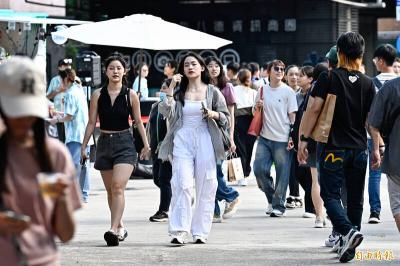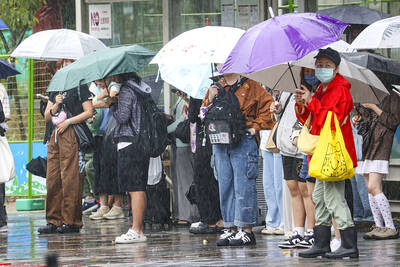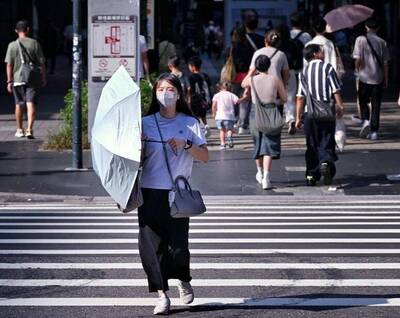A consultative committee of the Mainland Affairs Council has urged the government to launch a “track two” dialogue with China in a bid to further exchanges across the Taiwan Strait.
The suggestion was made at the first meeting of the committee since President Tsai Ing-wen (蔡英文) took office on May 20.
At the meeting, the attendees voiced concerns about the stalemate in exchanges between Taiwan and China since Tsai took office.
Cross-strait ties have been imbued by a sense of uncertainty following Tsai’s reluctance to recognize the so-called “1992 consensus.”
The “1992 consensus” — a term former council chairman Su Chi (蘇起) admitted making up in 2000 — refers to a tacit understanding between the Chinese Nationalist Party (KMT) and the Chinese Communist Party that both sides acknowledge that there is “one China,” with each side having its own interpretation of what “China” means.
Participants said that China’s internal political factors and economic conditions have also affected exchanges across the Taiwan Strait.
The council said attendees at the meeting suggested that in addition to the current official dialogue platform, invitations should be extended to think tanks and academics across the Taiwan Strait to hold talks in a bid to facilitate cross-strait dialogue.
China is still pushing for exchanges in the private sector and is reaching out to young Taiwanese, attendees said.
Council Deputy Minister Lin Cheng-yi (林振義) said that the government continues to monitor cross-strait ties and would implement any measures needed to adapt to the challenge of the relationship.
Lin said that the government is determined to keep all communication channels open and to maintain the existing dialogue mechanism and would keep its China policy consistent, predictable and sustainable.

Temperatures in northern Taiwan are forecast to reach as high as 30°C today, as an ongoing northeasterly seasonal wind system weakens, the Central Weather Administration (CWA) said. CWA forecaster Tseng Chao-cheng (曾昭誠) said yesterday that with the seasonal wind system weakening, warmer easterly winds would boost the temperature today. Daytime temperatures in northern Taiwan and Yilan County are expected to range from 28°C to 30°C today, up about 3°C from yesterday, Tseng said. According to the CWA, temperature highs in central and southern Taiwan could stay stable. However, the weather is expected to turn cooler starting tonight as the northeasterly wind system strengthens again

The Ministry of Foreign Affairs (MOFA) yesterday expressed “grave concerns” after Singaporean Prime Minister Lawrence Wong (黃循財) reiterated the city-state’s opposition to “Taiwanese independence” during a meeting with Chinese Premier Li Qiang (李強). In Singapore on Saturday, Wong and Li discussed cross-strait developments, the Singaporean Ministry of Foreign Affairs said in a statement. “Prime Minister Wong reiterated that Singapore has a clear and consistent ‘one China’ policy and is opposed to Taiwan independence,” it said. MOFA responded that it is an objective fact and a common understanding shared by many that the Republic of China (ROC) is an independent, sovereign nation, with world-leading

COOLING OFF: Temperatures are expected to fall to lows of about 20°C on Sunday and possibly 18°C to 19°C next week, following a wave of northeasterly winds on Friday The Central Weather Administration (CWA) on Sunday forecast more rain and cooler temperatures for northern Taiwan this week, with the mercury dropping to lows of 18°C, as another wave of northeasterly winds sweeps across the country. The current northeasterly winds would continue to affect Taiwan through today, with precipitation peaking today, bringing increased rainfall to windward areas, CWA forecaster Liu Pei-teng (劉沛滕) said. The weather system would weaken slightly tomorrow before another, stronger wave arrives on Friday, lasting into next week, Liu said. From yesterday to today, northern Taiwan can expect cool, wet weather, with lows of 22°C to 23°C in most areas,

Taiwan sweltered through its hottest October on record, the Central Weather Administration (CWA) said yesterday, the latest in a string of global temperature records. The main island endured its highest average temperature since 1950, CWA forecaster Liu Pei-teng said. Temperatures the world over have soared in recent years as human-induced climate change contributes to ever more erratic weather patterns. Taiwan’s average temperature was 27.381°C as of Thursday, Liu said. Liu said the average could slip 0.1°C by the end of yesterday, but it would still be higher than the previous record of 27.009°C in 2016. "The temperature only started lowering around Oct. 18 or 19